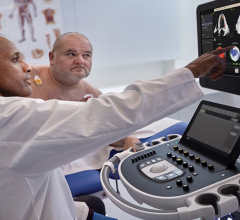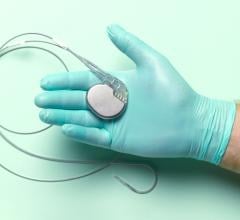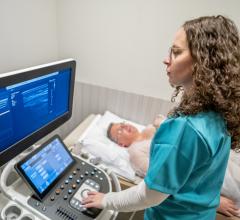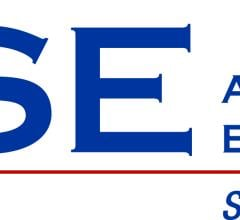
The ScImage cloud-based PICOM365 enterprise cardiology is one of the newer generation echo reporting solutions that offers several ways to streamline workflow.
Echocardiography reporting systems are usually integrated with, or offered as an add-on module for a cardiovascular information system (cardiac PACS). As technology has advanced, some cardiac ultrasound reporting systems have added advanced functionality that go beyond just offering a form to enter a text report. Many systems today offer the ability to automate the transfer of data like measurements directly into the report without retyping, auto-completion of report text based on quantification, the ability to embed images or URL links to cine clips or prior exams, and other workflow improvements to reduce the time physicians spend on each report.
Here is a list of some key considerations when looking at new or replacement echo reporting systems:
1. Makes Sure It Has the Templates You Need
Echo reporting systems should minimally offer specific reports for transthoracic echo (TTE), transesophageal echo (TEE) and stress echo (pharmacological and excursive stress). The system reports also need to be able to support the requirements of the service line, which often includes both invasive and non-invasive procedures.
Most vendors' echo reporting systems on the market allow users to build or modify their own reports to meet their needs.
The ability to customize the workflow is critical, said Grace Verzosa, assistant director of cardiovascular imaging at the West Virginia Heart and Vascular Institute at West Virginia University (WVU). “To enable our physicians to read current and prior studies and report with maximum efficiency, we needed the freedom to develop our workflow recipe, including customizable hanging protocols, tight integration with quantification and visualization software tools in a consistent platform across all cardiology disciplines," Verzosa explained.
2. Improved Echo Workflow Capabilities
As with any electronic medical record system, reducing duplication or work, such as retyping measurements, can reduce reporting times. When a measurement is made on an image, ideally the value should be carried over automatically to the report to eliminate typing it in again, which can increase data entry errors.
Several vendors offer auto-generated structured reporting statements that auto-populate the report based on the measurements made. Echo reporting is very standards based, so vendors say it is easier to build echo templates than more complex and varied cases, as found in cath lab reports.
Templates that offer structured reporting can help reduce the time needed to complete reports, variability between clinicians reporting the information and aid in later data mining of the information. Structured reports should limit the need for free text and use standardized terms and taxonomy that can be picked from drop down menus. Combined with auto import of measurements, these features help auto complete the final report.
Structured reporting can help standardize the language used by physicians so everyone is on the same page and the definitions are the same between each person completing a report. There can be a level of subjectivity in statements like "moderate regurgitation" or "mild aortic stenosis." So, statements should be formed on clinically based definitions that usually center on measurements, such as those from the American Society of Echocardiography (ASE). In an era of evidence-based medicine, this standardization avoids clinicians looking at the images and making a quick visual assessment. Definitions should be based on quantifiable features such as valve area measurement ranges from ASE to determine the level of aortic stenosis. This allows for apples-to-apples comparisons of patients and everyone being on the exact same page in the assessments and their understanding of the taxonomy used.
"In my lab, we emphasize precise measurement of these crucial cardiac parameters using the sonographer-generated measurements, and a range that we specify for each parameter using ASE guidelines," said Anthony Pearson, M.D., St. Luke's Hospital in Chesterfield, Mo. "Using the ScImage system, the report is automatically populated with the corresponding appropriate statement. For example, the echo I was reviewing had a left atrial volume index of 35, just over the upper limits of normal. 'Mild left atrial enlargement' was already present in my report, along with the correct description of left ventricle and right ventricle size and function as well as right atrium size. Thus, with a few clicks, I can complete the report."
Often in serial imaging exams to monitor patient conditions, the report information is basically the same from exam to exam. To reduce repetitive data entry, some vendors offer a "carry forward" feature where information from prior exams can be copied and pasted from old exams report and quickly transferred into the new report. Change Healthcare's platform is among the vendors that offer this feature.
3. Ease of Access to Echo Data
Cardiologists are generally not present when cardiac ultrasound exams are performed, so they need to be able to access the report when they need it. This is often when they are meeting with a patient or preparing for a procedure. Systems that limit access only on specific workstations are usually disruptive to the physician's workflow, especially if they are on rounds, in their office or about to go into a procedure. The newer generation of web or cloud-based systems offer access to the reports anywhere there is an Internet connection.
Systems that allow access to both the reports and images in one location are also helpful for workflow. There is usually a high level of inefficiency when users need to look in two separate locations or are required to enter separate logins.
Physician workflows are increasingly becoming more mobile with patient information reviewed on a tablet, so systems that allow access to reports and images anywhere using a web connection are helpful to meet this demand.
An example of this functionality is seen in the ScImage cloud-based PICOM365 enterprise cardiology imaging solution that was implemented at WVU.
“This comprehensive cloud solution allows seamless integration of imaging and full workflow customization to meet our specific exam interpretation requirements while empowering physicians to review and report from anywhere," said Partho Sengupta, M.D., professor and chief of cardiology and chair of cardiac innovation at WVU. "This is a disruptive innovation that supports a new age of caring for patients using automation and speed to provide better and more cost-effective care."
Another example is Digisonics, which offers a virtual desktop infrastructure platform for increased security, availability and remote reading access.
Ease of access can also extend to the electronic medical record (EMR). Not all echo reporting systems will seamlessly integrate into an EMR, but often it is sufficient to have a PDF copy of the echo report available on the EMR.
"The main question is how seamlessly the vendor can meet your accessibility and IT needs," suggested Kyle Souligne, strategic marketing, imaging, workflow and care solutions, Change Healthcare. "A system should streamline the reporting process, reduce the number of logins and automate anything that can be automated to save time."
Souligne said some echo systems offer close integration of report and images, but others do not. Close levels of integration make it easier to include images in the reports. Vendors say some hospitals have interest in including images and others do not, so he said this is a question echo labs should ask their service line users prior to looking for a new echo system to ensure the new system has the integration level that matches the need of the cardiologists.
4. Aggregating Data for Echo Lab Accreditation and Registries
Some echo reporting systems can help in gathering data for trials, the ASE ImageGuideRegistry, and for accreditation documentation, such as IAC Echo Lab Accreditation. Accreditation data can be built around showing policies and procedures that are in place to ensure complete exams are done by qualified sonographers and physicians. Some systems enable the lab to pull statistics to prove adequate procedure volumes are being performed.
An example of how IT can help with echo lab accreditation and improving efficiency is at Sligo University Hospital in Ireland. The cardiology department adopted Change Healthcare's McKesson Cardiology cardiovascular information system in 2013 to streamline processes and improve workflow. The system replaced a manual, paper-based process so echo orders could automatically be received into McKesson Cardiology from Ireland’s National Integrated Medical Imaging System (NIMIS), and then fed directly through to the echocardiogram machines. All the echo images and measurements are then stored within the cardiology database, enabling the cardiac physiologists to undertake reports on the system.
“The process not only streamlined echo referrals, but also provided doctors with access to the electronic reports at the touch of a button. For doctors previously used to time-consuming creation of paper orders and storing printed reports within patient charts, the entire process became far more efficient and effective,” explained Anita Flynn, senior cardiac physiologist.
The cardiology department’s British Society of Echocardiography (BSE) accreditation has been supported by the use of an echo reporting system, which leverages the digital storage system and reporting, plus embedded BSE range checks. Using the software’s electronic vetting, the echo team was able to triage echos, reducing the number by 8.9 percent in 2016 as a result of eliminating inappropriate requests and ensuring 80 percent of requests from the acute ward are carried out on the same day as ordered.
5. Analytics To Data Mine Echo reports
Most of the larger vendors offer a data analytics package to be able to harvest insights from the echo reports. Hospitals can quickly gain insight into their patient populations, measure operational efficiency, determine areas for improvement and plan for future growth. Data mining and business analytics also can streamline accreditation requirements and management reporting for clinicians.
“As we move away from fee-for-service and towards value-based payment models, performance metrics become crucial to the operations of any successful cardiovascular service line,” said Lumedx President and COO Chris Winquist. He explained high-powered analytics tools can help heart and vascular centers improve outcomes, streamline workflows and dramatically reduce costs.
Related Echo Reporting Content:
10 Questions to Ask When Purchasing a Cardiovascular Information System
Cardiology PACS in the Digitally Enlightened Era
Improving Patient Care By Combining Humanitarianism With Technology
Consolidation of Cardiology Data and its Integration Into the EMR





 June 12, 2024
June 12, 2024 








